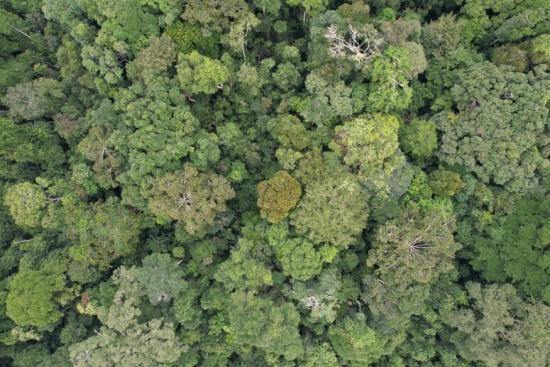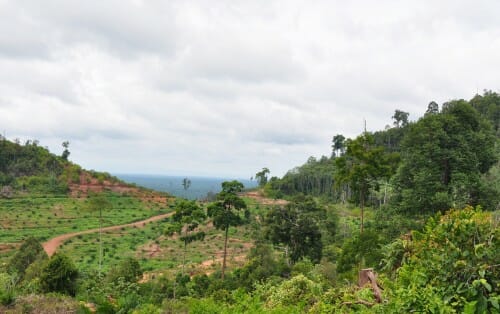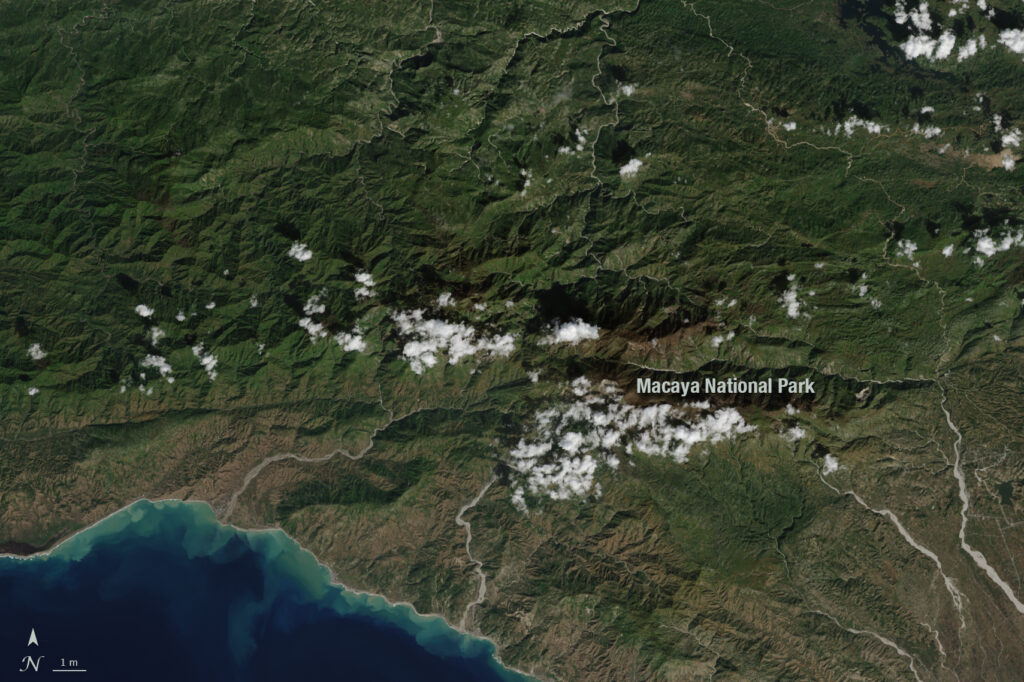Curator’s note: Forest loss information derived from Landsat was a foundational piece of this work. Zuzana Burivalova and her team used the Landsat-based Global Forest Change data set on Google Earth Engine to analyze forest loss patterns.

Protected forests are unlikely to be cut down when they are surrounded by intact forests. Conversely, the more degraded the boundaries of a protected area are, the more likely that deforestation will encroach into the protected forest as well.
These findings come from a new analysis of protected forests worldwide. The results have the potential to help national governments and other agencies direct limited resources toward those areas at greatest risk of deforestation, which threatens biodiversity and releases large amounts of carbon dioxide into the atmosphere.
“We wanted to find out what happens to the forests in protected areas when there is less and less forest around them — when their buffer zone starts getting less dense and more like a mosaic of forest and fields,” says Zuzana Buřivalová, lead author of the new study and a professor of forest and wildlife ecology at the University of Wisconsin–Madison. “Based on the percentage of forest cover around a national park, we can now predict and say: ‘Okay you should be careful right now’ or ‘You don’t have to worry just yet.’”
With other researchers at UW–Madison, Colorado State University and the Indian Institute of Science, Buřivalová published her findings Aug. 18 in the journal Current Biology.

By using satellite imagery of every protected forest around the world — largely made up of national parks and forests — Buřivalová’s team analyzed the trends of forest loss both within those protected areas and in the territory extending 5 kilometers from the boundary. The researchers studied forest loss from 2000 to 2018 and made predictions for the next 18 years, to 2036.
They discovered that when more than 90% of the boundary zone remains forested, the protected area is likely to experience little or no deforestation. When the adjacent territory drops to about 20% forest cover, the protected area starts to lose forest cover at equal rates to the nearby region —as if it is no longer protected.
Reference:
Buřivalová, Zuzana, Sarah J. Hart, Volker C. Radeloff, and Umesh Srinivasan. 2021. “Early warning sign of forest loss in protected areas.” Current Biology. doi: https://doi.org/10.1016/j.cub.2021.07.072.
Related Reading:
+ A Path to Becoming a Conservation Scientist, Mongabay






